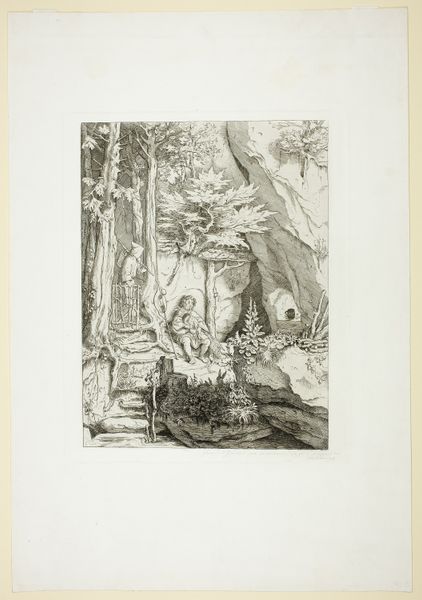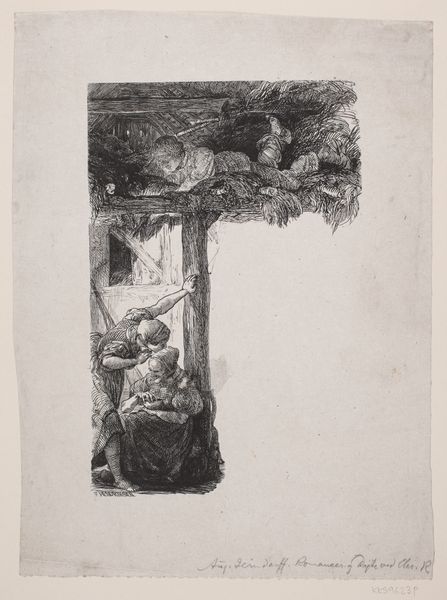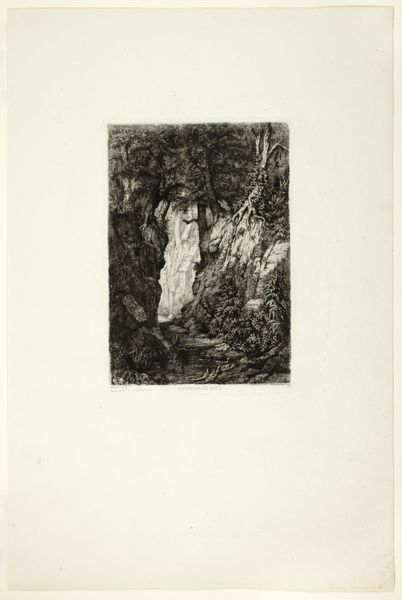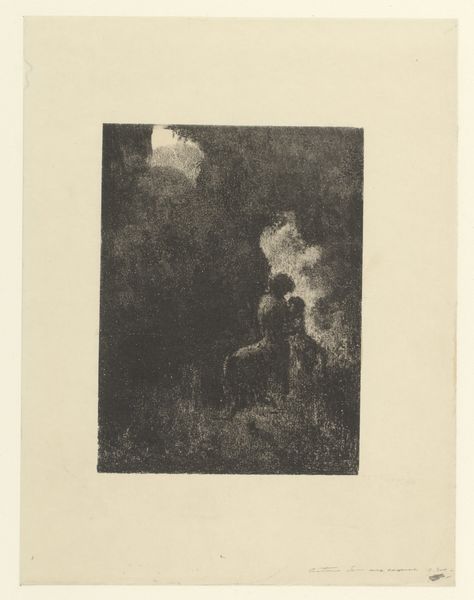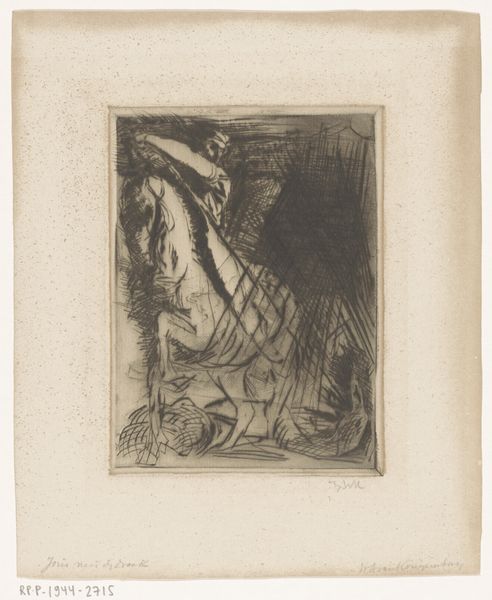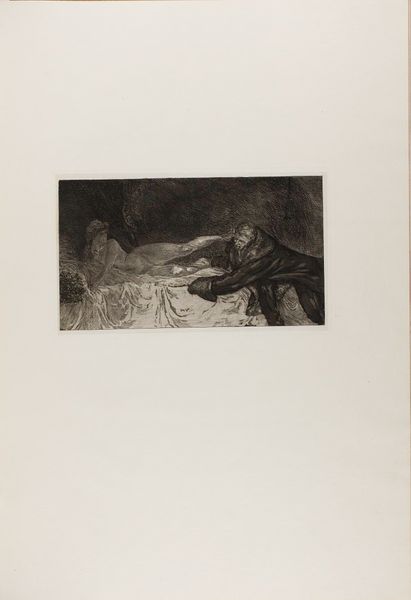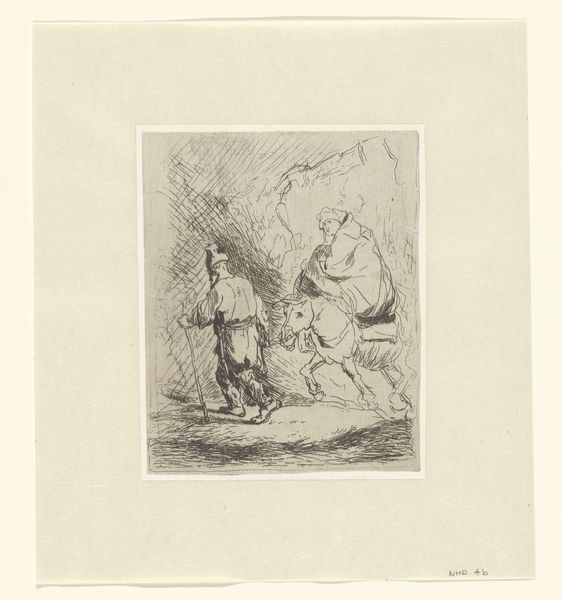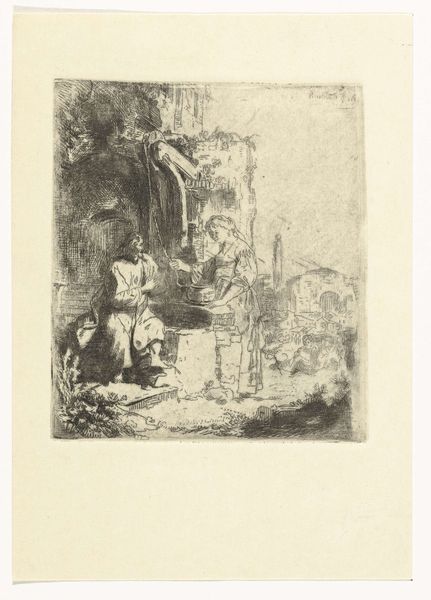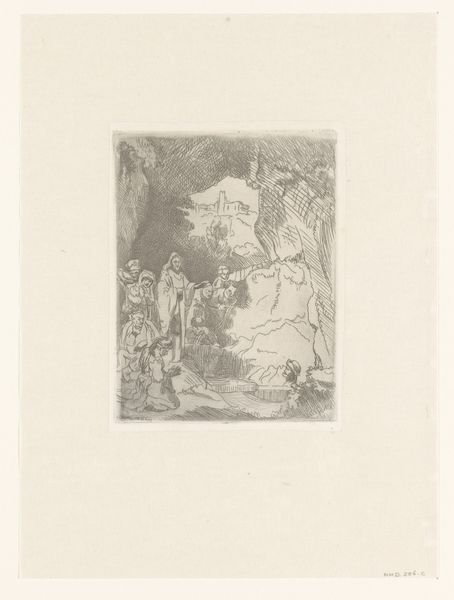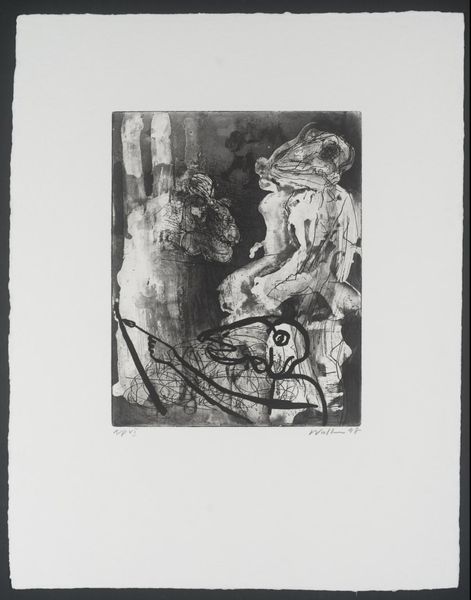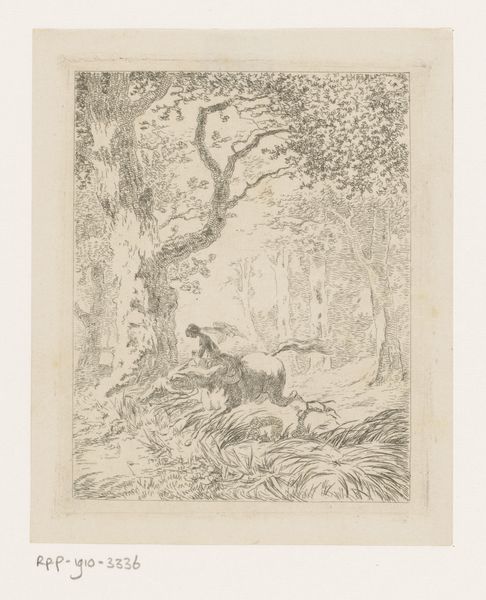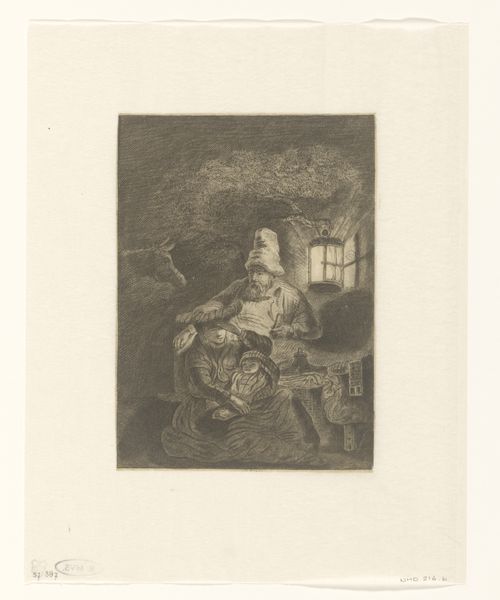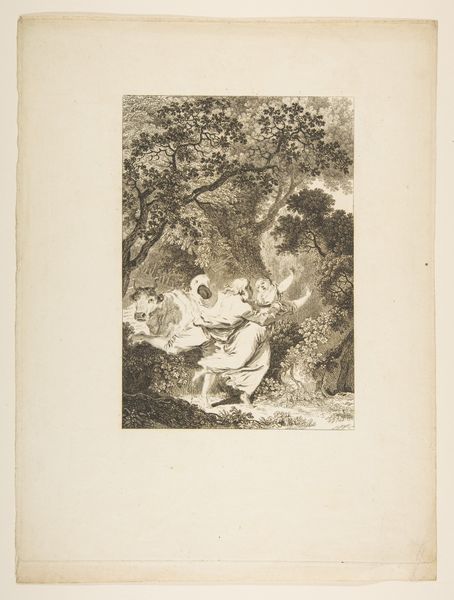
drawing, print, paper, engraving
#
drawing
# print
#
landscape
#
paper
#
france
#
genre-painting
#
engraving
Dimensions: 292 × 217 mm (image); 370 × 300 mm (sheet)
Copyright: Public Domain
Editor: So, here we have Auguste-Louis Lepère’s "Woodcutters' Meal," a print on paper, probably made sometime between 1887 and 1908. There's a real sense of camaraderie in this scene. How do you interpret this work within its historical context? Curator: This print offers a glimpse into the lives of working-class individuals in France during a period of immense social and political upheaval. Consider the Industrial Revolution's impact: Lepère portrays labourers, but their existence is precarious, highlighting social stratification and economic disparities. What visual cues support this reading? Editor: Well, their clothing seems simple, and the setting is rudimentary, almost a little grim? It doesn't feel romanticized at all. Curator: Precisely! Lepère’s choice of subject matter elevates the everyday experiences of those often overlooked. The woodcut medium itself, traditionally associated with popular imagery and dissemination to a wider audience, reinforces this commitment to portraying the lives of ordinary people. How might this connect with broader artistic movements of the time? Editor: I’m thinking Realism maybe? Courbet? But more...grounded. Less heroic, maybe. Curator: Yes, there's a shared concern with representing lived reality, yet Lepère imbues the scene with social commentary. Do you think the composition contributes to this at all? How does the fire affect your understanding of this gathering? Editor: The fire is the focal point. Maybe suggesting warmth and a fleeting moment of respite amid their toil. It’s a stark contrast with the surrounding dark forest. Curator: The fire might symbolize resistance against encroaching industrialization. And their community becomes paramount. So much to unpack in a single image. Editor: Definitely makes you think about the stories behind those faces. I learned that sometimes quiet representation can be more powerful than grand gestures. Curator: Precisely! It shows the political power in depicting the mundane. It is a reminder of art's potential to foster empathy and challenge social hierarchies.
Comments
No comments
Be the first to comment and join the conversation on the ultimate creative platform.
